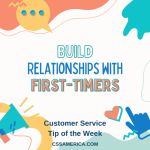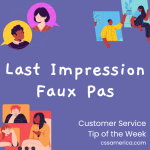I was helping a friend navigate some healthcare processes recently, so I conducted a 3-way call with my friend and the physician practice to try to get things cleared up. The employee I spoke with on the phone – let’s call her Katie.
There had been poor communication between different employees at the clinic, but Katie didn’t throw the others “under the bus.”
The office coordinator (who has since left the practice) had previously told my friend that the coordinator had certain paperwork, but the papers had not been filed correctly. However, Katie still apologized on behalf of the office for the coordinator’s misstatement.
Another practice was supposed to forward information to this office, but they sent it to the wrong facility. Katie offered to call that other practice to get them to resend it.
Katie tried to call my friend, but my friend had changed their phone number and forgot to tell the office, so the calls did not go through. Katie did not complain or huff and puff in frustration; instead, she offered to update the contact information so she could follow up with my friend.
It wasn’t Katie’s fault, and it’s probably not your fault in most cases when you find yourself in these situations. Sometimes it’s the co-worker that drops the ball. Maybe it’s another organization that didn’t do something correctly. Perhaps the customer makes a mistake.
Katie showed that even though it wasn’t her fault, she was willing to rectify the problem. She was willing to apologize on behalf of others. She was willing to be proactive, and she was willing to do it without a negative tone or a negative word.
Channel your inner Katie the next time you find yourself having to fix problems caused by others.
Signup for FREE Tips! Contact Us More Resources for You Visit Our Home Page
























